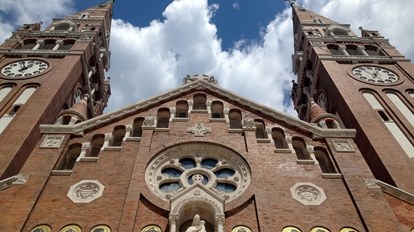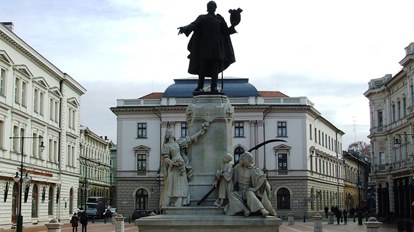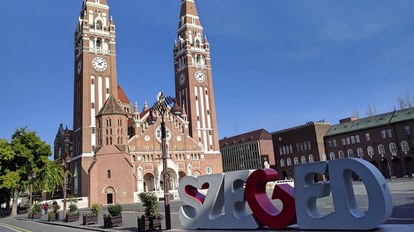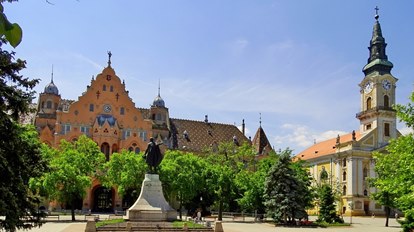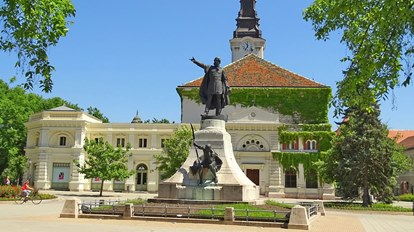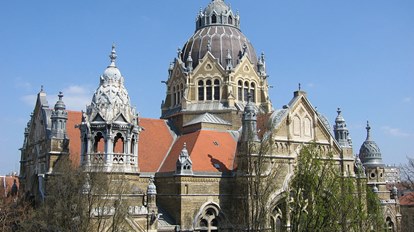These charming towns are architectural preserves, where you'll discover the
diversity of Hungary's Art Nouveau that blends Western, Moorish and vernacular
motifs.
Kecskemét, 80 km from the capital, is famous for its apricot palinka,
majolica and quaint museums. The historical centre on the Kossuth square has a
Secession-style town hall, the church of St. Nicholas — the oldest church in
Kecskemét, built in the 14th century, and the largest Baroque monument on the
Hungarian plains, the Church of the Ascension. Another example of Art Nouveau
is the city theatre building. A landmark of the city is the Cifra Palota
Palace, decorated with majolica panels. The Moorish synagogue with Gothic
elements, the Calvinist Grammar School and the Lutheran Palace with an unusual
church are examples of Secession, the Piarist Church is representative of
Classicism, the Palace of Justice is modernist and neo-classic.
Szeged — close to the Serbian and Romanian border — captivates with its
traditional cuisine and baked goods. It is Hungary's third largest city
and is built in the Art Nouveau style. The town hall is the brightest building
in town, the beautiful German Palace, adorned with patterns of different
colours, the Grof Palota, the biggest Art Nouveau monument in town, the
Reformed Palace, the splendid four-storey Secession-style Moritz building, the
beautiful decoration of the Goldschmidt Palace, the fairytale Rájek Palace, the
wonder of Art Nouveau: Ungar-Meyer Palace with its domed corner tower, the
surprising interweaving of Hungarian, Moorish and Mediterranean elements in the
synagogue's architectural ensemble, the striking decor of Rachel Palace — this
is by no means a complete list of the glorious city's architectural
attractions.
Price per group
1-3 persons 550
4-6 persons 600
7-11 persons 1110
12-18 persons 1130
19-33 persons 1400
33-49 persons 1420
